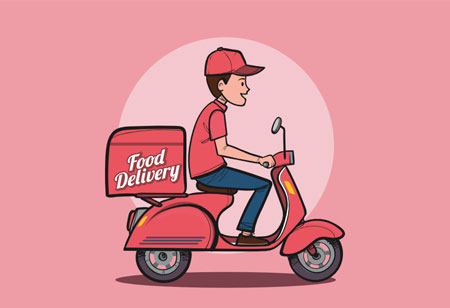THANK YOU FOR SUBSCRIBING
Be first to read the latest tech news, Industry Leader's Insights, and CIO interviews of medium and large enterprises exclusively from Food and Beverage Tech Review
What Should You Know About Food Delivery Services?
As customers are using food delivery service apps to make orders, the restaurant operators need to know the importance of partnering with third-party partnership platforms.

By
Food and Beverages Tech Review | Tuesday, November 26, 2019
Stay ahead of the industry with exclusive feature stories on the top companies, expert insights and the latest news delivered straight to your inbox. Subscribe today.
As customers are using food delivery service apps to make orders, the restaurant operators need to know the importance of partnering with third-party partnership platforms.
Fremont, CA: In the food industry, the delivery has become one of the driving sources for value. New methods of delivery services are emerging to reach out to the customers at their convenience, like drive-thru, fast-casual, and others. It is arduous to keep oneself as the primary choice for people among various competitors. Customers want their food to be delivered quickly with the same quality as what they would expect inside restaurants or if they carried it out themselves. It is expected that the restaurant-specific food delivery sales will face an increment of about 77 percent by 2020, representing the fastest-growing ordering method among American consumers.
Restaurants implementing their own delivery service find little profits while it is not the case with third-party partnership platforms for delivery services, as described below.
Increased Transparency
The “word-of-mouth” culture has lost its significance, as customers opt restaurants that are available in the delivery platform allowing restaurant operators to reach them at the earliest. This makes it mandatory for restaurants to partner with the providers of the delivery service platform where customers can make their orders. It is a huge opportunity for hotels to connect with new customers who can discover them using a food delivery app.
Customer Relationships
Partnering with delivery platforms can help restaurants strengthen their relationships with the customers while broadening them. Especially during peak hours, having a third-party delivery service, besides one’s own delivery service, can expand the delivery radius, and there will not be a negative response for the customers when the food has to be delivered during peak hours. In other words, restaurants can respond more effectively to customers’ demands than before during busier times while covering a larger geographical area, thus increasing traffic and sales.
Check Out This : MANAGING ESG
Valuable Insights
Additionally, partnering with a third-party delivery service makes it easier for restaurant operators to study their customers through crucial insights and customer data. Restaurant managers can adopt new methods and offer disciplined delivery services through the information gained from sales. They can identify new purchasing trends, implement them to meet customer demands, and market to new customers.
I agree We use cookies on this website to enhance your user experience. By clicking any link on this page you are giving your consent for us to set cookies. More info







